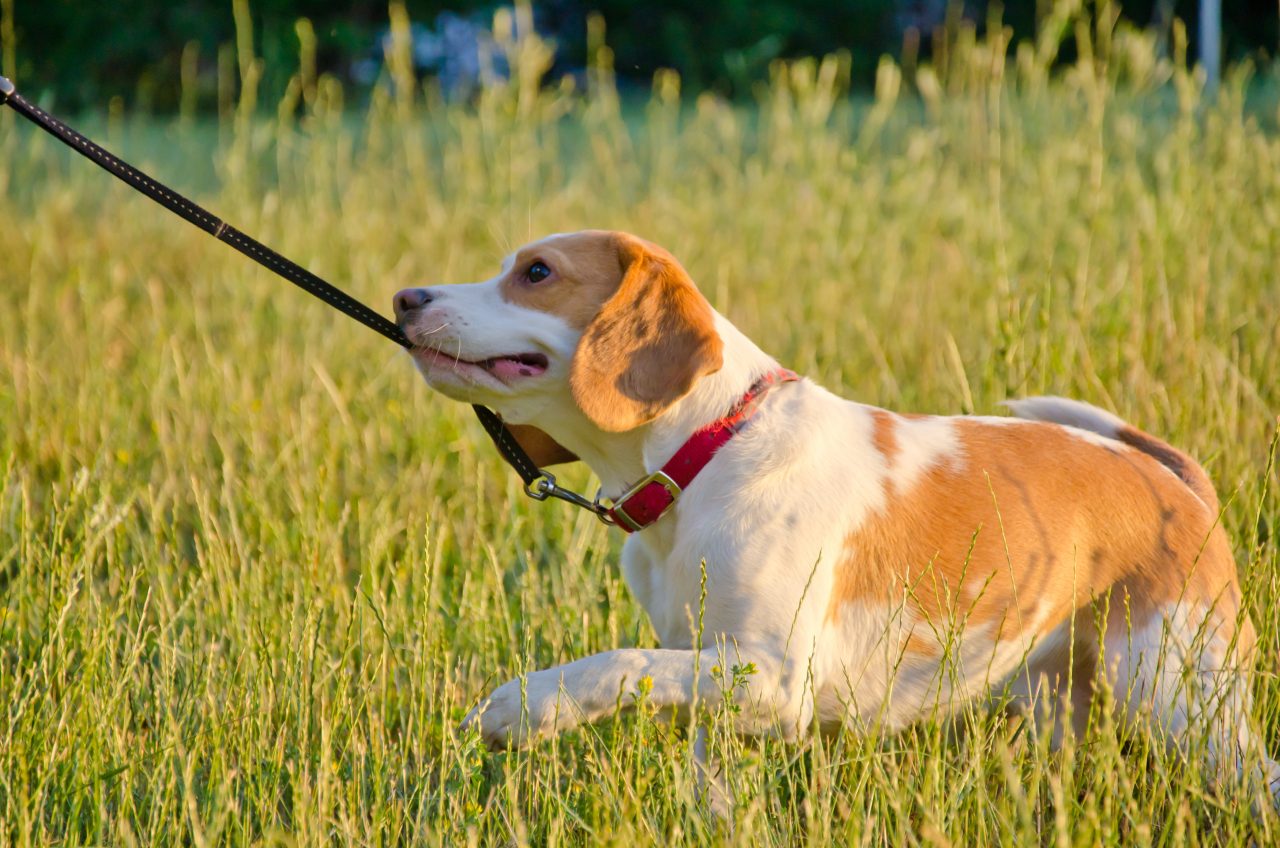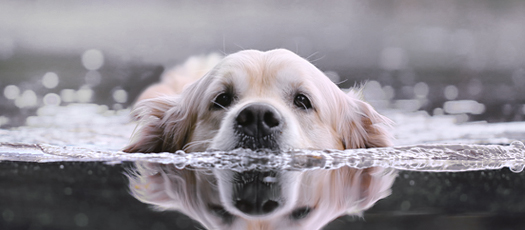
The leash – creating a positive link – for a harmonious bond
A leash is an essential piece of gear for any dog, just as crucial as a bed, bowl, and food.
Making the leash a normal part of life
At first, any dog takes a completely neutral stance toward a leash. It’s normal for it to take a bit of time to get used to. But before long, your canine companion will recognize that it means “let’s go outside” when you hold the leash in your hand or leash your dog before leaving home. That creates positive associations right away, especially if you start out by giving your dog a treat when you attach the leash.
Practice first in a calm environment so your dog can get used to having the leash put on calmly, ideally while sitting.
Have the leash and treats ready. While your dog sits or stands calmly by your side, you might say “leash,” for example, and attach it to the collar or harness. When you’re first starting out, it’s best to give the dog a treat afterward. Say “up” or use a similar command to have your dog stand up. It won’t take long for putting on and taking off the leash to become a calm, automatic routine. The more positive and solid the learning experience is, the more enthusiastically your dog will come to you when you say “leash” and assume the position to put on the leash.
Be sure that putting on and taking off the leash is always a positive experience. That can change very quickly, with your dog trying to get out of having the leash put on or even running away from you or pulling on the collar or harness. All too quickly, in a stressful situation, we can grab for the dog’s collar from above and attach the leash that way, or fall into a habit of leashing the dog mainly when we are angry and speaking sharply to the dog during the leashing process or when using the leash. Some dog owners also leash their dogs as a punishment for not obeying and then take them home. Even if it were a “punishment,” a dog wouldn’t be able to associate not coming when called with going home on a leash. Your dog simply doesn’t have the capacity to view this as a “punishment.” After all, putting on the leash and going home are normal parts of every walk. In these cases, it would be much better to work on a reliable way to call your dog back or attach the leash at certain points along the way, such as when there are a lot of distractions, and use it as a helpful guide.
One good way to maintain the positive association with the leash is to offer to play games with your dog on the leash, such as finding hidden objects, fetch, changing pace, hand signals and so on.
Putting your dog on a leash should not be a bad feeling for either person or dog. Instead, it should be a symbol of your close relationship and trusting bond.
Relaxation is key
Many dog owners dream of having their dogs walk calmly by their side on a leash. But depending on whether your furry friend has a more sedate temperament or seems to always have energy to burn, that goal may be easier or harder to achieve. It’s all very simple in theory: Dogs that never get what they want by pulling will stop doing it. But there can often be a gap between theory and practice here. It might slip your mind from time to time, and before you know it – whoops – there you go being tugged along to the next scent mark…
A puppy can only manage short times on the leash, for very short distances. Older dogs can go for longer. Whether your dog is a puppy or a mature dog, it’s important to remember to stand still, with no comment, as soon as you feel too much tension on the leash. As soon as the dog does something that causes the leash to slacken, you can continue your walk, also without comment. With older dogs, it is also helpful to change direction frequently instead of standing still.
If you are planning to train with the leash, you should give your dog a chance to work off some energy first, especially for active ones.
And be sure to remember that dogs mainly read our body language. They focus primarily on our inward attitude and mental state. Before training, check in with yourself to make sure you are as calm and relaxed inwardly as you need to be, and that you aren’t still thinking about things like work stress. If you are, it would be better to wait for a different time.
Positive reinforcement: To get your dog to walk by your side or follow you, it can be helpful to offer a reward, such as inviting body language or voice or a treat. Changes of direction and pace make walking at your side more exciting, and they can also increase the attention your dog pays to you. If the dog walks next to you, you can offer praise and/or a treat as a reward.
Using body language teaches the dog to observe more closely, increasingly looking to you for guidance after a couple of changes of direction. Now your next task is to observe your dog when he walks calmly on the leash.
At these times, it’s best to affirm your dog’s behavior with a friendly, praising voice. Petting and a treat with petting are more likely to cause a fuss in these situations.
You can use small or large doses of your voice, tailoring it perfectly to any situation.
Once your dog has learned that putting on the leash and the leash itself are generally a positive thing, it will also be easy to relax and take your dog along on the leash in everyday situations or leave him outside a restaurant, for example, without worrying. Some dogs may also perceive a blanket that you bring along as a calm, relaxing spot.
When should you attach a leash?
There are many situations in which putting on a leash is useful for both the dog and his two-legged companion. It can even help to avert dangerous situations. A leash protects your furry friend when you are walking by a road, for example. In areas where there is a lot of wildlife and your dog becomes interested in hunting, the leash protects not just the dog, but also the wild animals. A leash is also a form of life insurance for skittish or anxious dogs that might bolt when exposed to certain noises, other dogs, people, and so on.
Out of consideration for others, using a leash should be a matter of course on busy paths, in the city, or at restaurants and in similar areas. Leashes are also required when there are official leash rules, such as in protected natural areas or during wildlife breeding seasons.
If you are out walking and encounter a dog on a leash, call your own canine companion to you, even if all he wants to do is play or say hello. There are many reasons for a dog or dog owner to prefer not to have contact with other dogs, and you should respect that. It won’t hurt your dog not to make contact with the one on a leash, and it will help the other dog.
As a basic principle, you should not let your dog make contact with other dogs while wearing a leash. There are two reasons for this. First, whenever your dog is on the leash, he is supposed to simply stay with you, but his instinct will be to approach others of his kind. If you are out and about at a bar or restaurant, too, it is very handy to keep your dog from wandering off to meet another dog under a neighboring table. Second, and more importantly, you should try to keep your dog from making contact while on the leash because dogs cannot communicate in the same way when they are leashed as when they are off the leash. It’s all too easy for a critical situation to arise. In the worst case, a dog can get in the habit of yanking on the leash, jumping and barking. Passing by each other calmly and with enough distance is one of the basics for any canine companion, and it’s easy to practice through small, simple exercises. This makes going for a walk a harmonious way to spend time together and deepen the bond with your do


